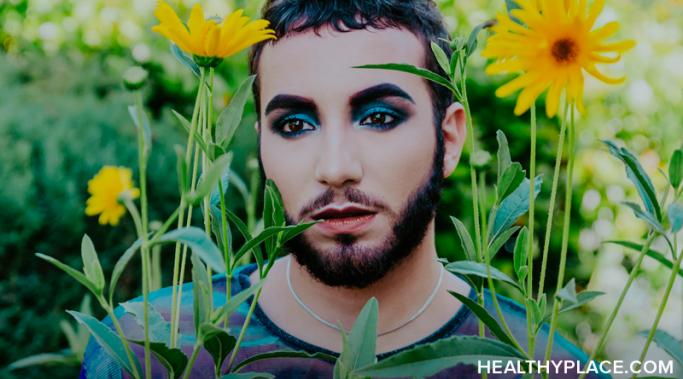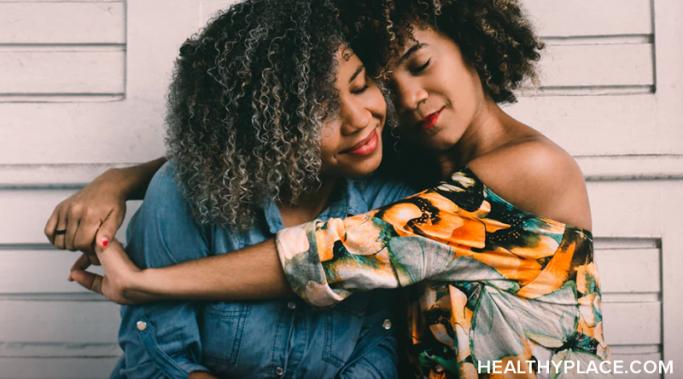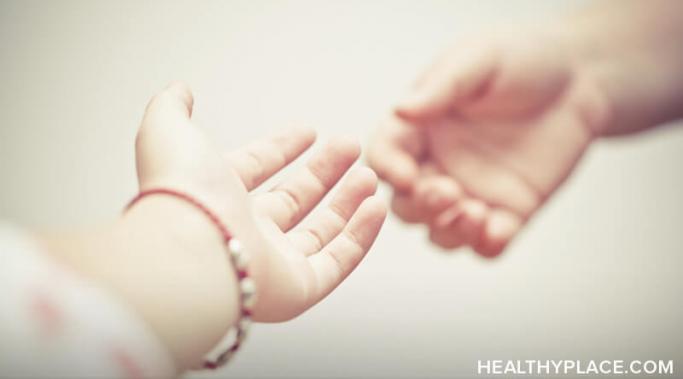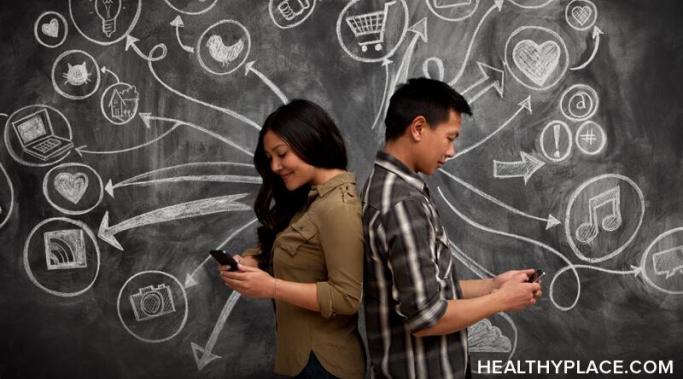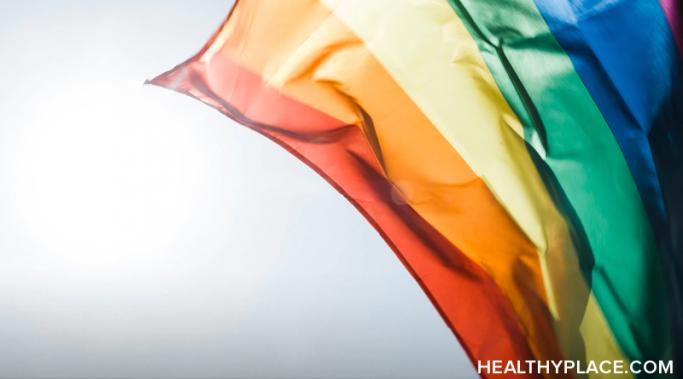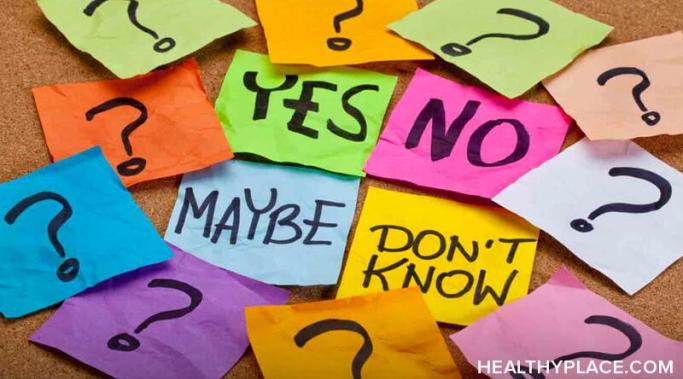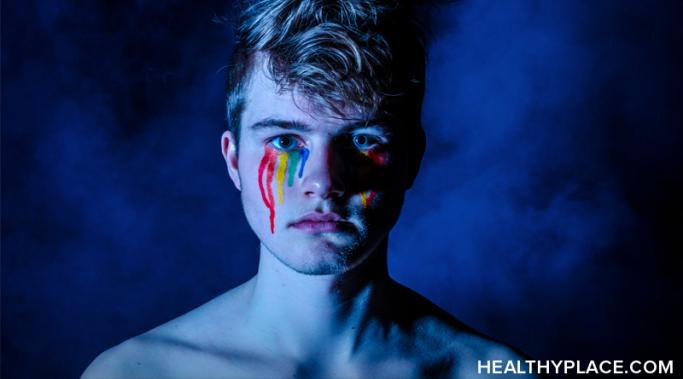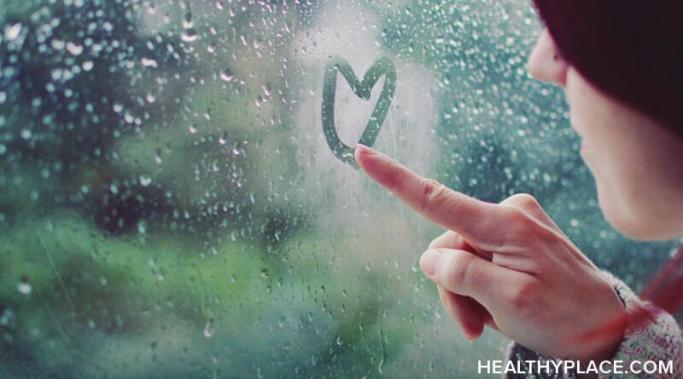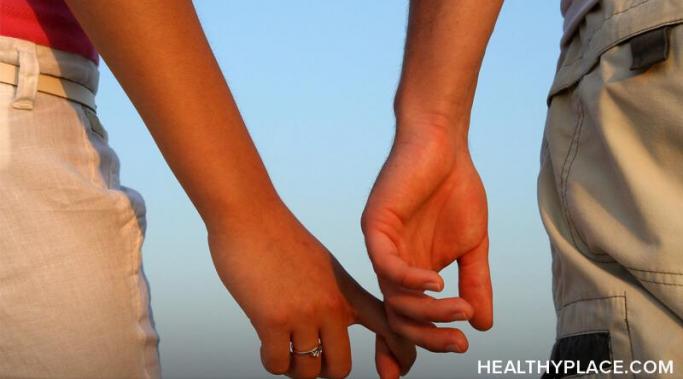Identity policing is when a person tries to tell another person (usually one with a marginalized identity) that their identity is invalid or that they can't or don't belong to an identity group they claim to identify with. I wanted to talk about this after my last post, where I talked about what it means to be a lesbian. Unfortunately, even within the queer community, I have had my identity policed on more than one occasion. Identity policing can be extremely hurtful and problematic. Allow me to illustrate with the example that follows from my life.
The Life: LGBT
Lesbian is the first letter of the queer alphabet soup. We've all heard LGBTQ+ (lesbian, gay, bisexual, transgender, queer, plus.), but what does lesbian actually mean? People used to define lesbians as "women loving women," but this definition is outdated and doesn't take into account the many transgender, non-binary, and gender non-conforming humans who still proudly call themselves lesbians. I am one of these people.
Passive communication has been the silent killer of all of my friendships. While I've been developing my communication skills to create better long-lasting platonic and romantic relationships, I've learned how my communication style has been one of my greatest flaws. Passive communication is a style in which a person avoids expressing their thoughts, feelings, and needs. Passive communicators are unlikely to assert themselves and stand up for their rights. Friendships have come and gone, ending both ambiguously and anticlimactically, because I allowed them to pass by. By letting my fear of rejection and need to please others control me, I've done a great disservice to myself. Time and time again, I have held myself back from expressing my feelings and needs only to create great internal conflict, emotional distress, loneliness, and feeling unfulfilled in my relationships. That's the crux of passive communication.
My name is Daniel Lyons (they/he), and I am the new co-author of the blog "The Life: LGBT Mental Health." I am 36 years old and a transgender, queer, bisexual, non-binary person living in California with multiple mental health diagnoses. Throughout my life, I struggled with misdiagnosis and struggled to get adequate care for my mental health. Some of this had to do with being assigned female at birth and doctors not taking my symptoms seriously and underdiagnosing. Some of it had to do with diagnosis difficulty and the presence of multiple diagnoses. I can confidently say now I live with bipolar disorder, attention-deficit/hyperactivity disorder (ADHD), and posttraumatic stress disorder (PTSD). I also live with gender dysphoria, which I will talk more about in blog posts to come. It’s a complicated matrix of diagnoses, but I want to write this blog post for folks to know there is hope.
Taimi is a lesbian, gay, bisexual, transgender, queer, plus (LGBTQ+) dating app known for its inclusivity. I've used dating apps like Tinder and Bumble, but this is my first time using a dating app specifically for LGBTQ+ people. The setup was easy, and I was impressed by the dating app's features. However, after using the app for a few weeks and reading some reviews, I think many improvements can be made to the user experience. I'm trying to navigate the good and the bad as I dip my toes into the dating pool. Here's what I found out about the Taimi dating app.
This Pride month, I'm recommending my favorite lesbian, gay, bisexual, transgender, queer, plus (LGBTQ+), coming-of-age love story. "Classmates," also known as "Doukyusei," by Asumiko Nakamura is about two high school boys who fall in love for the first time. The manga and its anime adaptation will leave your spine tingling and your stomach aflutter.
College is often the change in environment lesbian, gay, bisexual, transgender, queer, plus (LGBTQ+) students need to discover their identity, express themselves, and meet other queer people their age. Choosing a school where they can thrive and be themselves is important. The school I attended helped me learn more about LGBTQ+ people and come to terms with my identity. There were a few deciding factors I looked for when choosing a school that would be supportive of LGBTQ+ students and create an environment where they can be themselves.
During my sophomore year of college, I discovered I was transgender nonbinary. I began experimenting with the way I presented my gender. For me, that meant being myself for the first time. And that was terrifying. The idea of having my internal sense of self in congruence with my external self felt like turning myself inside out.
I have nonbinary gender insecurity. In America, there are two genders. There are two sexes. It is not common knowledge that sex and gender are different and that there are multiple sexes. When I applied for jobs, I was asked about my gender and given two options: male or female. I didn't even have the option I needed to answer an optional question. I wasn't sure if they meant to ask about my sex or my gender. I was forced to choose or decline.
I'm demisexual—I'll explain what that is. The first sign that I was on the asexual spectrum was back when I was in middle school. I remember driving in the car with my mom getting annoyed as I listened to the radio. Every song was about sex, love, or drugs. I didn't understand why the themes for music were so narrow. People could sing about anything, yet they would always sing about the same old things. I off-handedly said, "Why is every song about sex? Can't they sing about something else?"
